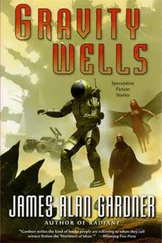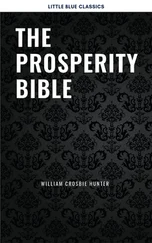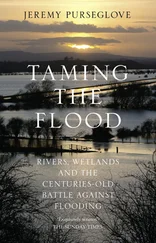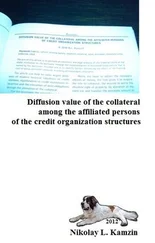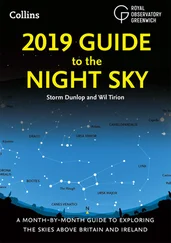From the early years of the twentieth century to well past its middle age. Not even the chronology is described in conventional language: the century is an aging person, a contemporary of the story’s protagonists.
Typists wanting to work in an office. Not “denial of economic opportunities.” By invoking a moderately skilled occupation from an earlier era, Wilkerson invites us to imagine the desperation of a woman who has acquired a proficiency that could lift her from the cotton fields to a professional office but who is denied the chance because of the color of her skin.
Yard boys scared that a single gesture near the planter’s wife could leave them hanging from an oak tree. Not “oppression,” not “the threat of violence,” not even “lynching,” but a horrific physical image. We even see what kind of tree it is.
as hard and unyielding as the red Georgia clay. Once again prose is brought to life with a snatch of poetry, as in this simile with its sensual image, its whiff of allusion (I think of Martin Luther King’s “red hills of Georgia”), and its lyrical anapest meter.
anyone who ever longed to cross the Atlantic or the Rio Grande. Not “immigrants from Europe or Mexico.” Once again the people are not sociological categories. The author forces us to visualize bodies in motion and to remember the motives that pulled them along.
what the pilgrims did … what the Scotch-Irish did … what the European Jews did … what the landless in Russia, Italy, China, and elsewhere did. Wilkerson begins the paragraph by stating that the actions of her protagonists are universal, but she does not rest with that generalization. She nominates the Great Migration for inclusion in a list of storied emigrations (expressed in pleasingly parallel syntax), whose descendants doubtless include many of her readers. Those readers are implicitly invited to apply their respect for their ancestors’ courage and sacrifice to the forgotten pilgrims of the Great Migration.
when the land turned to dust, not “the Dust Bowl”; when there was nothing to eat, not “the Potato Famine”; the landless, not “the peasants.” Wilkerson will not allow us to snooze through a recitation of familiar verbiage. Fresh wording and concrete images force us to keep updating the virtual reality display in our minds.
They left. Among the many dumb rules of paragraphing foisted on students in composition courses is the one that says that a paragraph may not consist of a single sentence. Wilkerson ends a richly descriptive introductory chapter with a paragraph composed of exactly two syllables. The abrupt ending and the expanse of blankness at the bottom of the page mirror the finality of the decision to move and the uncertainty of the life that lay ahead. Good writing finishes strong.
The authors of the four passages share a number of practices: an insistence on fresh wording and concrete imagery over familiar verbiage and abstract summary; an attention to the readers’ vantage point and the target of their gaze; the judicious placement of an uncommon word or idiom against a backdrop of simple nouns and verbs; the use of parallel syntax; the occasional planned surprise; the presentation of a telling detail that obviates an explicit pronouncement; the use of meter and sound that resonate with the meaning and mood.
The authors also share an attitude: they do not hide the passion and relish that drive them to tell us about their subjects. They write as if they have something important to say. But no, that doesn’t capture it. They write as if they have something important to show. And that, we shall see, is a key ingredient in the sense of style.

Chapter 2
A Window onto the World
CLASSIC STYLE AS AN ANTIDOTE FOR ACADEMESE, BUREAUCRATESE, CORPORATESE, LEGALESE, OFFICIALESE, AND OTHER KINDS OF STUFFY PROSE
Writing is an unnatural act. 1As Charles Darwin observed, “Man has an instinctive tendency to speak, as we see in the babble of our young children, whereas no child has an instinctive tendency to bake, brew, or write.” The spoken word is older than our species, and the instinct for language allows children to engage in articulate conversation years before they enter a schoolhouse. But the written word is a recent invention that has left no trace in our genome and must be laboriously acquired throughout childhood and beyond.
Speech and writing differ in their mechanics, of course, and that is one reason children must struggle with writing: it takes practice to reproduce the sounds of language with a pencil or a keyboard. But they differ in another way, which makes the acquisition of writing a lifelong challenge even after the mechanics have been mastered. Speaking and writing involve very different kinds of human relationship, and only the one associated with speech comes naturally to us. Spoken conversation is instinctive because social interaction is instinctive: we speak to those with whom we are on speaking terms. When we engage our conversational partners, we have an inkling of what they know and what they might be interested in learning, and as we chat with them, we monitor their eyes, their face, and their posture. If they need clarification, or cannot swallow an assertion, or have something to add, they can break into the conversation or follow up in turn.
We enjoy none of this give-and-take when we cast our bread upon the waters by sending a written missive out into the world. The recipients are invisible and inscrutable, and we have to get through to them without knowing much about them or seeing their reactions. At the time that we write, the reader exists only in our imaginations. Writing is above all an act of pretense. We have to visualize ourselves in some kind of conversation, or correspondence, or oration, or soliloquy, and put words into the mouth of the little avatar who represents us in this simulated world.
The key to good style, far more than obeying any list of commandments, is to have a clear conception of the make-believe world in which you’re pretending to communicate. There are many possibilities. A person thumb-typing a text message can get away with acting as if he is taking part in a real conversation.* A college student who writes a term paper is pretending that he knows more about his subject than the reader and that his goal is to supply the reader with information she needs, whereas in reality his reader typically knows more about the subject than he does and has no need for the information, the actual goal of the exercise being to give the student practice for the real thing. An activist composing a manifesto, or a minister drafting a sermon, must write as if they are standing in front of a crowd and whipping up their emotions.
Which simulation should a writer immerse himself in when composing a piece for a more generic readership, such as an essay, an article, a review, an editorial, a newsletter, or a blog post? The literary scholars Francis-Noël Thomas and Mark Turner have singled out one model of prose as an aspiration for such writers today. They call it classic style, and explain it in a wonderful little book called Clear and Simple as the Truth.
The guiding metaphor of classic style is seeing the world. The writer can see something that the reader has not yet noticed, and he orients the reader’s gaze so that she can see it for herself. The purpose of writing is presentation, and its motive is disinterested truth. It succeeds when it aligns language with the truth, the proof of success being clarity and simplicity. The truth can be known, and is not the same as the language that reveals it; prose is a window onto the world. The writer knows the truth before putting it into words; he is not using the occasion of writing to sort out what he thinks. Nor does the writer of classic prose have to argue for the truth; he just needs to present it. That is because the reader is competent and can recognize the truth when she sees it, as long as she is given an unobstructed view. The writer and the reader are equals, and the process of directing the reader’s gaze takes the form of a conversation.
Читать дальше



